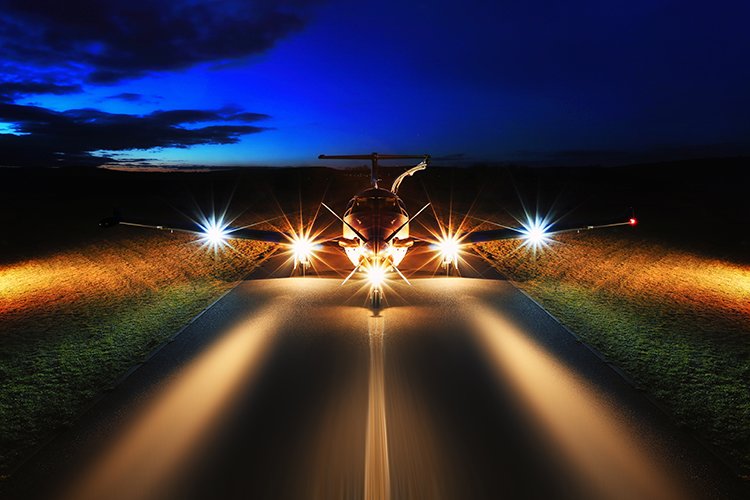In aviation, having an updated and well-maintained lighting system is essential. Aircraft illumination is
essential for takeoff, flying, and landing safely. These systems provide comfort and safety to passengers,
alert other pilots to aircraft status, and lighten the workload of ground crews and pilots. To guarantee
these systems operate at their best and adhere to aviation regulations, we need to upgrade and
maintain them. The maintenance and upgrades of aircraft lighting systems are covered in this article,
along with best practices, technology, inspections, and laws.
Understanding Aircraft Lighting Components
The aircraft lighting system comprises various types of lights, each serving a specific purpose. Navigation
lights, including red (port) and green (starboard) wingtip lights and a white tail light, indicate the
aircraft’s direction. Anti-collision lights, such as red beacons and white strobes, enhance visibility,
especially in low-light conditions. Landing lights illuminate the runway during approach and rollout,
while taxi lights assist in ground maneuvering.
Understanding the unique function of each light is paramount for both pilots and maintenance
personnel. Maintaining these aircraft lights involves regular inspections to check for burned-out bulbs,
cracked lenses, and loose connections. Cleaning the lights is also important to ensure maximum light
output. The manufacturer’s instructions and industry standard practices should be strictly followed
throughout these thorough examinations.
Technological Advancements in Aircraft Lighting
Advances in lighting technology have completely transformed the lighting systems on aircraft.
Traditional incandescent bulbs are being replaced by light-emitting diodes (LEDs) because of their
superior brightness, extended lifespan, and energy efficiency. LEDs are perfect for the harsh aviation
environment because they are also more resilient to shocks and vibrations.
The visibility of the aircraft can be greatly increased by switching to LED lighting, especially in bad
weather. Because LEDs respond more quickly, anti-collision signaling is more successful. LEDs are a wise
investment for airplane operators since their lower power consumption can also result in fuel savings
and lower operating costs.
Regulatory Compliance and Safety
Aviation authorities have set strict regulatory requirements that aircraft lighting systems must follow. By
enforcing strict guidelines for light intensity, color, and flash pattern, these regulations encourage
uniformity and guard against misunderstandings in the airspace. Frequent upgrades and maintenance
support compliance and increase aircraft safety overall. Pilots should consult the relevant rules and
regulations, such as those published by the FAA in the United States, for information unique to their aircraft type and operating area. In addition to ensuring safety, compliance shields the operator and the
general flying public from possible penalties and legal issues.
Proactive Maintenance for Optimal Performance
Proactive maintenance is key to maximizing the lifespan of your aircraft lighting system. This entails
following the suggested maintenance plan set out by the manufacturer, which usually includes routine
cleaning, inspections, and bulb changes. Each component of the lighting system has its own
maintenance requirements, and understanding these is essential for effective upkeep.
Furthermore, implementing a robust lighting management system can streamline maintenance tasks
and track individual lights’ performance. Such systems can alert technicians to potential issues before
they escalate, preventing costly downtime and ensuring the aircraft remains airworthy. This preemptive
approach has the potential to save a significant amount of resources over time.
Upgrading Aircraft Lighting Systems
Upgrading your aircraft lighting system involves more than just replacing bulbs. It’s a strategic process
that requires careful consideration of various factors, including the aircraft’s specific needs, regulatory
requirements, and budget constraints. The goal is to enhance safety and efficiency without
compromising on other aspects of the aircraft’s performance.
Consulting with a qualified avionics technician is crucial to determining the most suitable upgrade path.
The technician can assess the existing system, recommend compatible LED lighting solutions, and ensure
proper installation and integration. This expertise ensures that the upgrade is seamless and aligns with
the aircraft’s overall design and functionality.
Conclusion
In the aviation industry, where safety and accuracy are crucial, an upgraded lighting system, kept up-to-
date and well-maintained, is a shining example of excellence. By following preventative maintenance
procedures and utilizing modern technology, you make sure that your aircraft is always visible,
compliant, and safe in the air. Remember that by ensuring the dependability and safety of your aircraft,
purchasing a high-performance lighting system contributes to the larger objective of aviation safety for
everyone.







